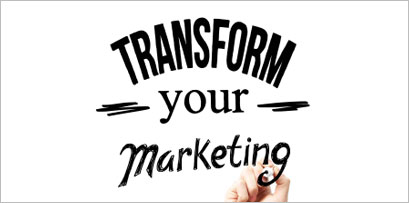Most people know and understand traditional or outbound marketing -- after all, we're inundated with it in the form of radio and television commercials, print advertising, billboards and constant online advertising. But how many companies really know what inbound marketing is, and have a deep understanding of how to effectively generate loyal customers and convert "lookers" into buyers?
 Inbound marketing is actually a simple idea with three elements to it:
Inbound marketing is actually a simple idea with three elements to it:
- Get found
- Convert
- Analyze the results
You might be surprised to learn that inbound marketing is not a new concept. In fact, it the idea dates back to the mid-1850's when Cyrus Hall McCormick, invented the mechanical harvester. According to "social ecologist" and writer, Peter F. Drucker, McCormick used the core principles in a primitive version to generate consumer interest in his farm equipment. Three decades later, Richard W. Sears and Alvah Roebuck published their catalog using the same ideas, and the Sears Catalog became world famous.
In the mid-1950's and 60's, Drucker himself advocated the idea that "...marketing should result in a customer who is ready to buy..." He stated that “The aim of marketing is to know and understand the customer so well that the product and service fits him and sells itself...” (“The Marketing Concept” by Peter F. Drucker, pub. 1974)
Although the concept has been around for quite some time, it wasn't until the popularity of the internet soared, that the idea became popularized by HubSpot founders Brian Halligan and Dharmesh Shah.
Most advertising and marketing, as we have historically known it, has been the idea of outbound or "interruption" marketing. It's traditionally been that commercial on the radio between songs, the break in the tv show or the ad in a magazine or newspaper. It's the idea of reaching the most people (who may or may not be interested in the product) -- rather than someone who's interested finding you. But because people use the "mute" button on their remotes, and their target audiences don't hear their ads.
But then, something changed -- and that change was the emergence of the digital age -- and, especially the internet. Halligan and Shah understood that the internet is a marketing game changer. People started using the search engines, not just for entertainment, but also for research. They'd search for the services and products that they were interested in. Suddenly the idea of allowing your product to be found, instead of the other way around, evolved into a critical marketing element.
Now the essential key developed into how to get found. Marketers study the algorithms that search engines use to find websites and discovered that if they can give the search engines what they "want" and give people what they need, more people will discover their particular website.
Nowadays, marketers use various methods to optimize their sites so people who are looking for their product or service can easily locate them. Then, when they're located, the sales process begins, often allowing the site visitor to sign up for more information (called "permission" marketing). This is psychologically an easier sell because the customer is already searching for the information.
Social media also comes into play an important part of inbound marketing. People ask for, and receive opinions on, the type or brand of product to purchase. Companies who engage in social media (Facebook, Twitter, Instagram, etc.) discover they can also create a following and drive traffic to their sites.
It will be interesting to see, how inbound marketing evolves as our digital age continues. How have inbound marketing helped your business?



